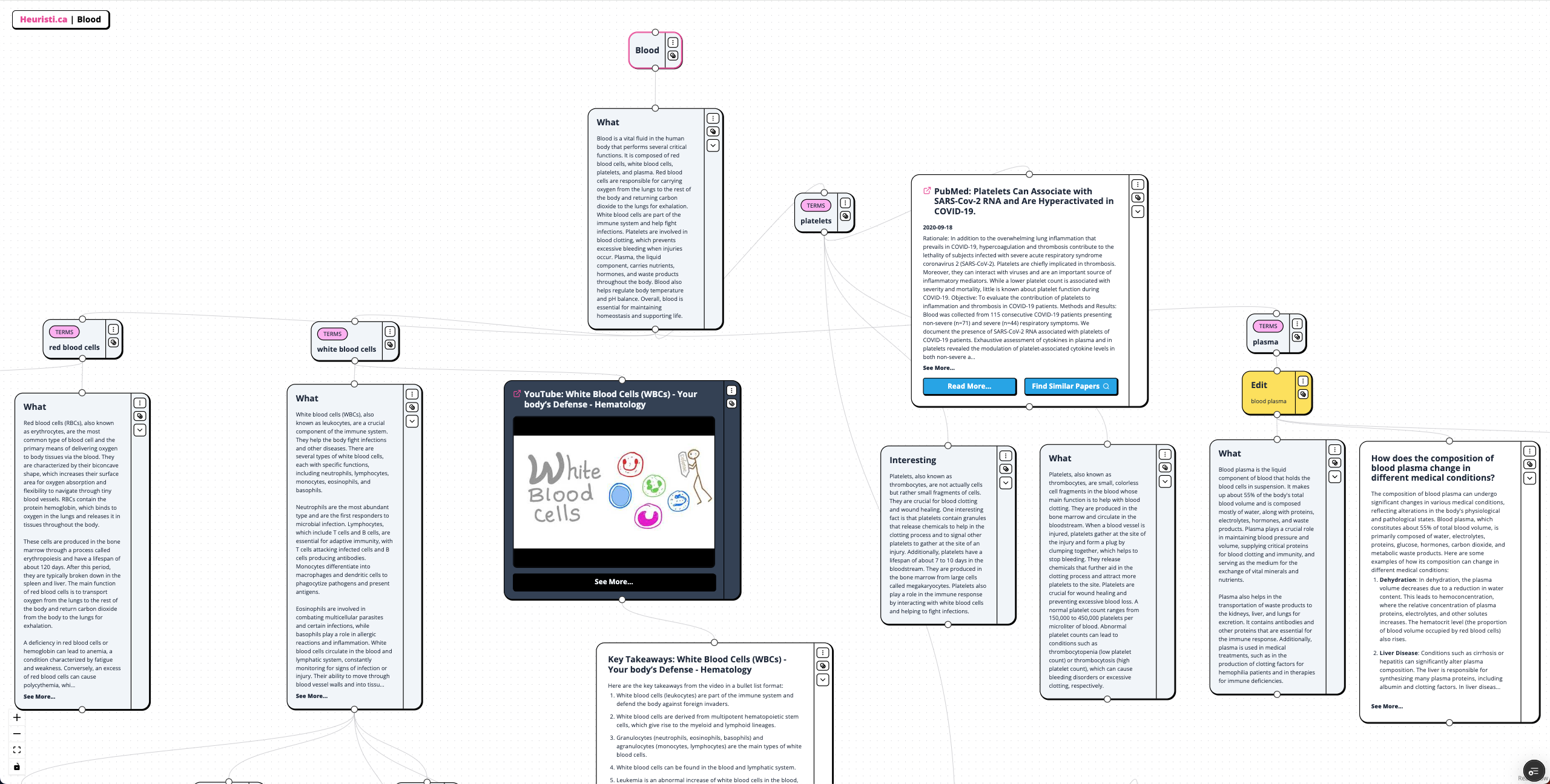Blood Concept Map

Summary
Blood is a vital fluid in the human body, composed of red blood cells, white blood cells, platelets, and plasma. Red blood cells (RBCs) transport oxygen from the lungs to body tissues and return carbon dioxide for exhalation. They are produced in the bone marrow and have a lifespan of about 120 days. A deficiency in RBCs can lead to anemia, while an excess can cause polycythemia.
White blood cells (WBCs), or leukocytes, are essential for the immune system, helping to fight infections. They include several types: neutrophils, lymphocytes, monocytes, eosinophils, and basophils, each with specific functions in immune response. Neutrophils are the first responders to infection, while lymphocytes are crucial for adaptive immunity, producing antibodies and attacking infected cells.
Platelets, or thrombocytes, are small cell fragments that play a critical role in blood clotting. They gather at injury sites to form plugs and release chemicals that aid in the clotting process. A normal platelet count ranges from 150,000 to 450,000 per microliter of blood, and abnormalities can lead to bleeding disorders or excessive clotting.
Plasma, the liquid component of blood, constitutes about 55% of total blood volume and is primarily composed of water, proteins, electrolytes, hormones, and waste products. It plays a crucial role in maintaining blood pressure and volume, transporting nutrients, and facilitating waste removal. Plasma composition can change significantly in various medical conditions, reflecting the body's physiological and pathological states.
Overall, blood is essential for maintaining homeostasis and supporting life, with each component playing a unique and vital role in health and disease.
Key Takeaways
- Red blood cells carry oxygen from the lungs to the body and return carbon dioxide for exhalation.
- White blood cells are part of the immune system and help fight infections.
- Platelets are involved in blood clotting, preventing excessive bleeding from injuries.
- Plasma, the liquid component of blood, carries nutrients, hormones, and waste products.
- Blood helps regulate body temperature and pH balance, maintaining homeostasis.
- Blood plasma constitutes about 55% of total blood volume and is primarily composed of water and proteins.
- Changes in blood plasma composition can indicate various medical conditions, such as dehydration, liver disease, and diabetes.
- Platelets, or thrombocytes, are small cell fragments crucial for blood clotting and wound healing.
- White blood cells, or leukocytes, include several types, each with specific immune functions.
- Neutrophils are the most abundant white blood cells and are the first responders to infections.
- Lymphocytes are responsible for adaptive immunity, including B cells and T cells.
- Macrophages and dendritic cells play distinct roles in the immune response, with macrophages focusing on pathogen clearance and dendritic cells on antigen presentation.
- Giulio Bizzozero was a pioneer in the study of blood cells and is credited with discovering platelets and their role in coagulation.
- Maintaining a healthy balance of blood cells is crucial for overall health and efficient bodily function.
Additional Concepts
Questions and Answers
What is blood?
What are red blood cells?
What are white blood cells?
What are platelets?
What is blood plasma?
Who was Giulio Bizzozero?
What are the functions of macrophages and dendritic cells?
Flashcards
What is blood and what are its main components?
Blood is a vital fluid in the human body that performs several critical functions. It is composed of red blood cells, white blood cells, platelets, and plasma.
What is the primary function of red blood cells?
Red blood cells are responsible for carrying oxygen from the lungs to the rest of the body and returning carbon dioxide to the lungs for exhalation.
What role do white blood cells play in the body?
White blood cells are part of the immune system and help fight infections.
What are platelets and their function?
Platelets, also known as thrombocytes, are small cell fragments that help with blood clotting by forming a plug at the site of injury.
What is blood plasma and its significance?
Blood plasma is the liquid component of blood that holds the blood cells in suspension and plays a crucial role in maintaining blood pressure and volume.
How does dehydration affect blood plasma composition?
In dehydration, the plasma volume decreases due to reduced water content, leading to hemoconcentration and an increase in the relative concentration of plasma proteins and solutes.
What are the two main types of lymphocytes?
The two main types of lymphocytes are B cells, which produce antibodies, and T cells, which attack infected cells.
What is the lifespan of platelets in the bloodstream?
Platelets have a lifespan of about 7 to 10 days in the bloodstream.
Who first described the concept of platelets?
The concept of platelets was first described by the Italian pathologist Giulio Bizzozero in the late 19th century.